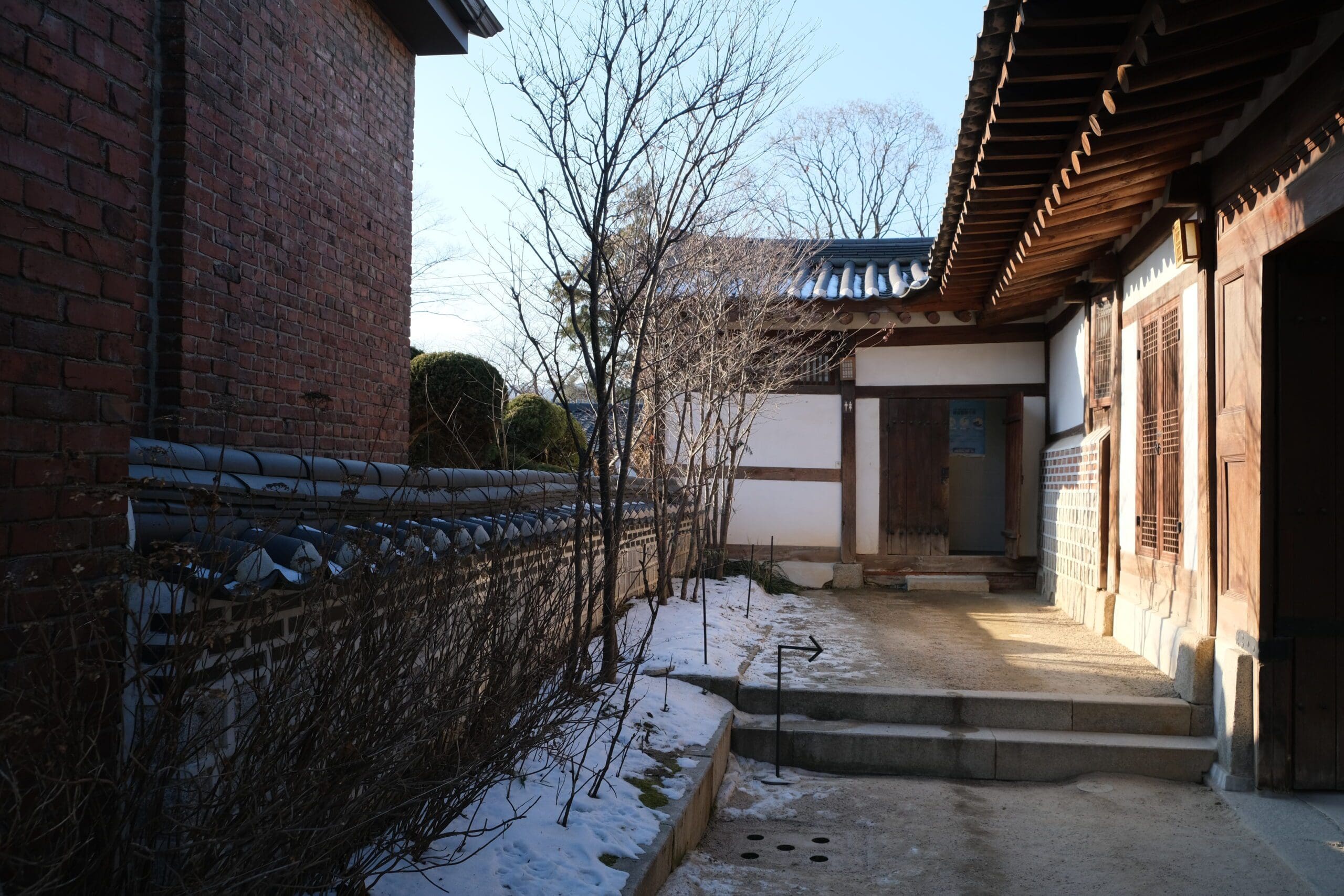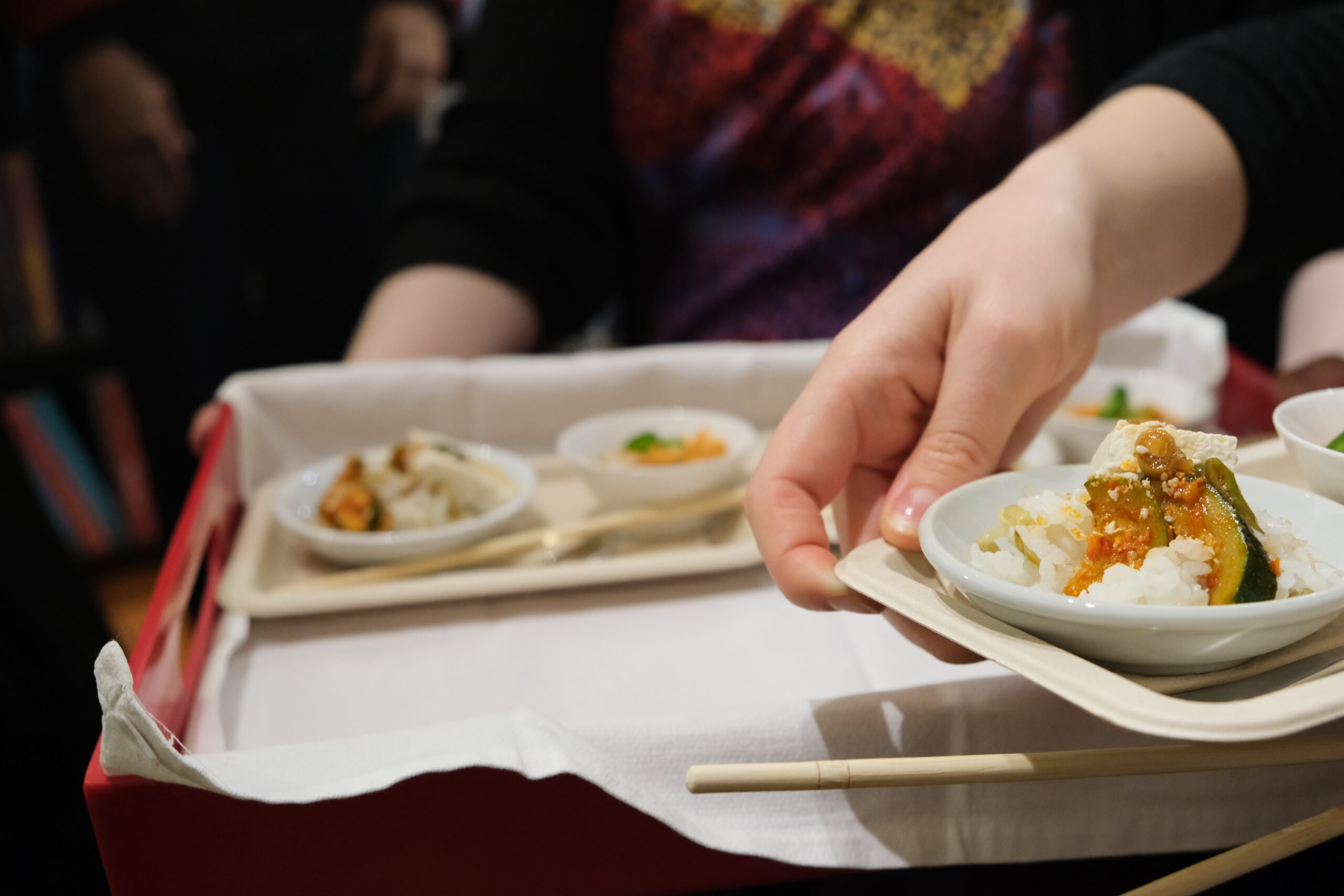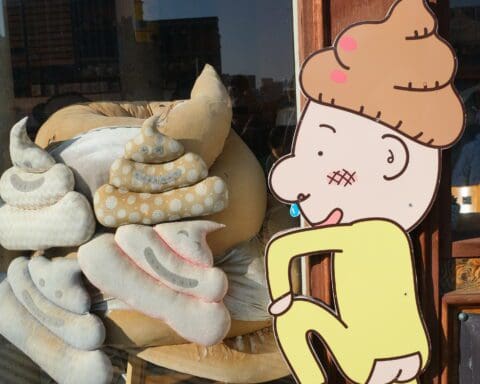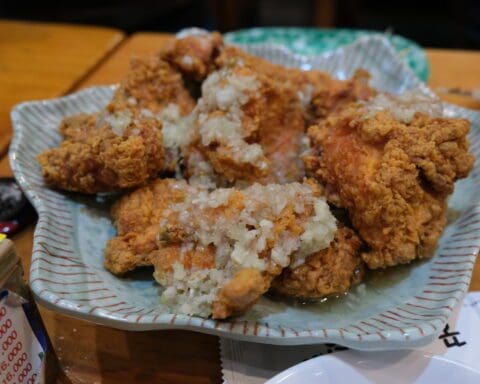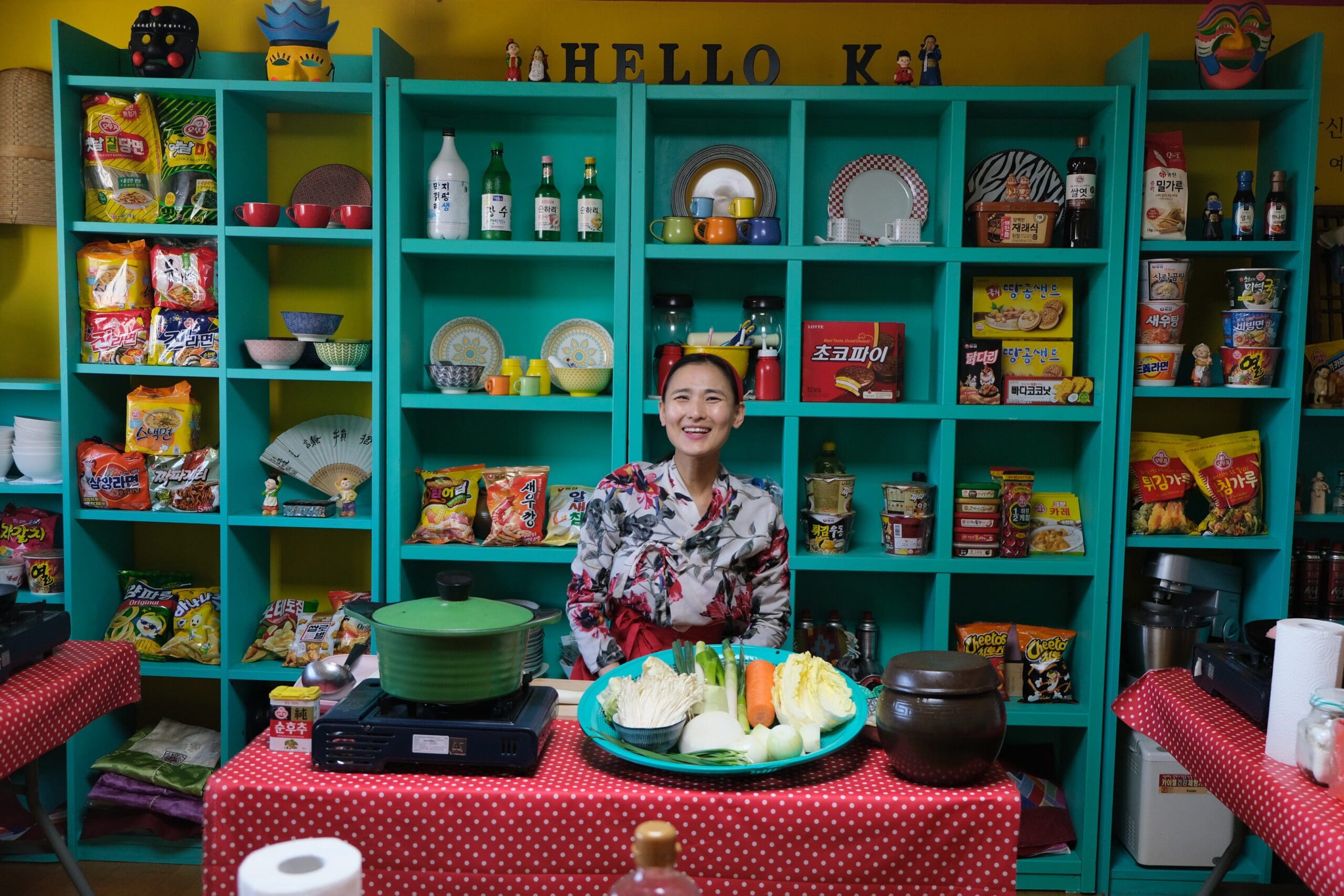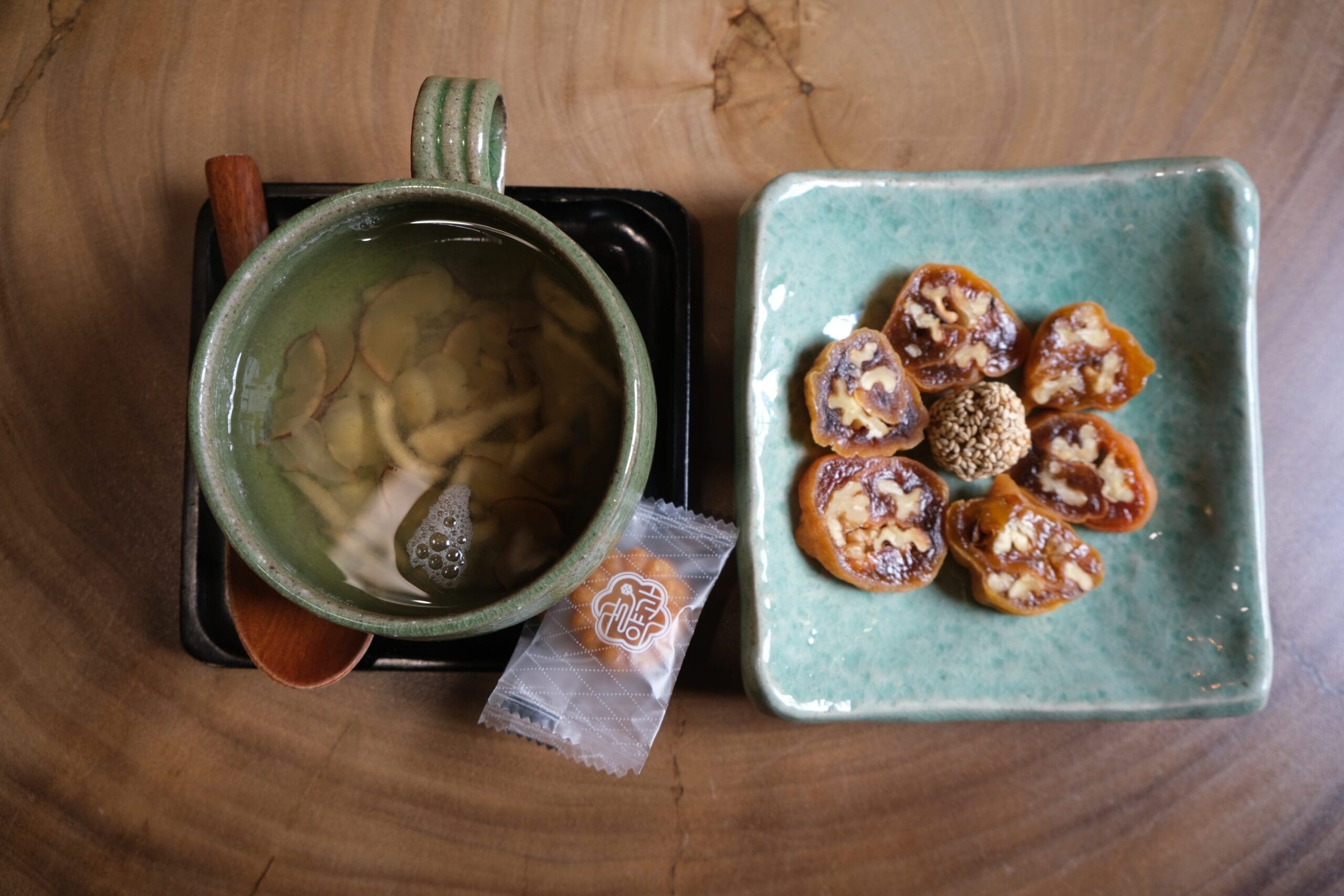We celebrated our anniversary in Korea by staying in Hanok in Bukchon, a traditional Korean village in Seoul. Hanok itself is a traditional Korean house, which you might have seen on TV if you are into k-dramas.
Prior to this, I had only been inside a Hanok once. It was more of a Hanok turned into a Korean tea house that Yin and I visited during my first Korean trip. I didn’t know that you could Airbnb a Hanok until Pri shared the story about her Hanok stay during her pre-covid South Korea trip with her mom, which now felt like a lifetime ago.
On the day, we checked out from our hotel in Myeongdong and got the hotel to book a taxi to the Hanok, as conversing with taxi drivers in Korea had been a constant challenge for us. Even then, the taxi driver insisted on dropping us on the main street instead of the actual address. It resulted in the already sick Fafa dragging both our luggage up the multiple hilly streets of Bukchon Hanok Village. Unfortunately, I couldn’t help him as I had fallen on the ice, twice, just an hour earlier.
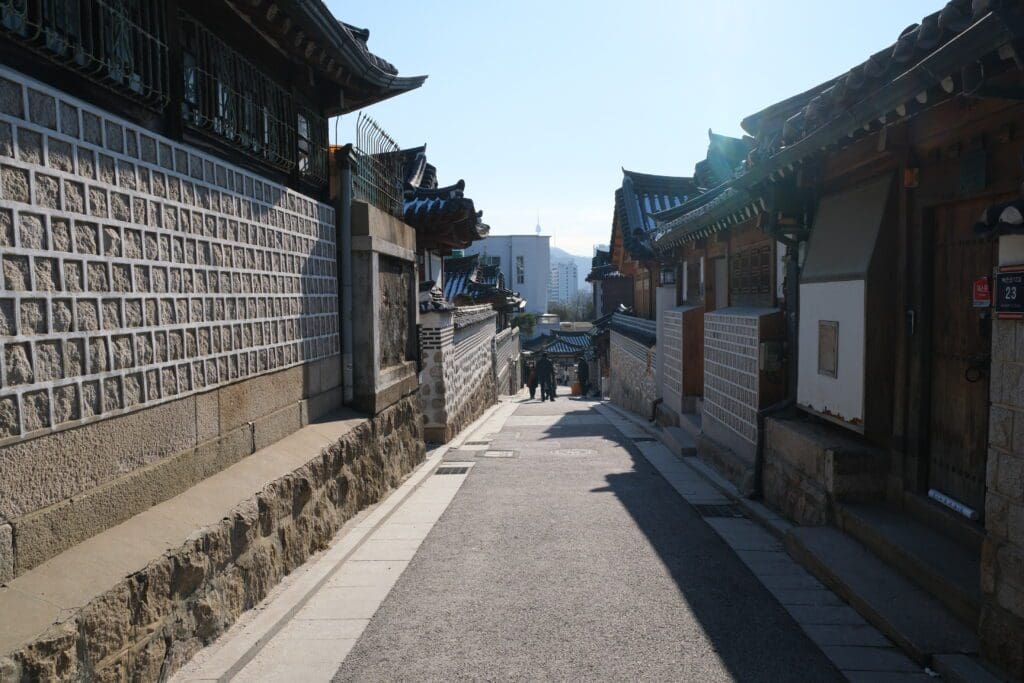
Eventually, we reached the Hanok, located pretty up the hill and well hidden from the flock of tourists.
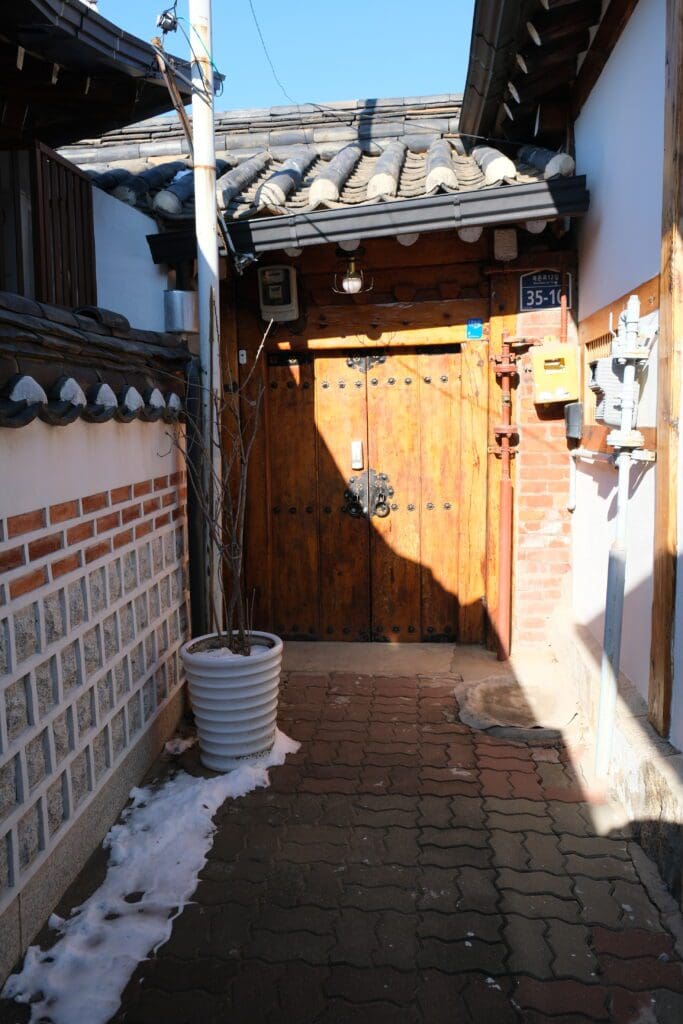
The Hanok
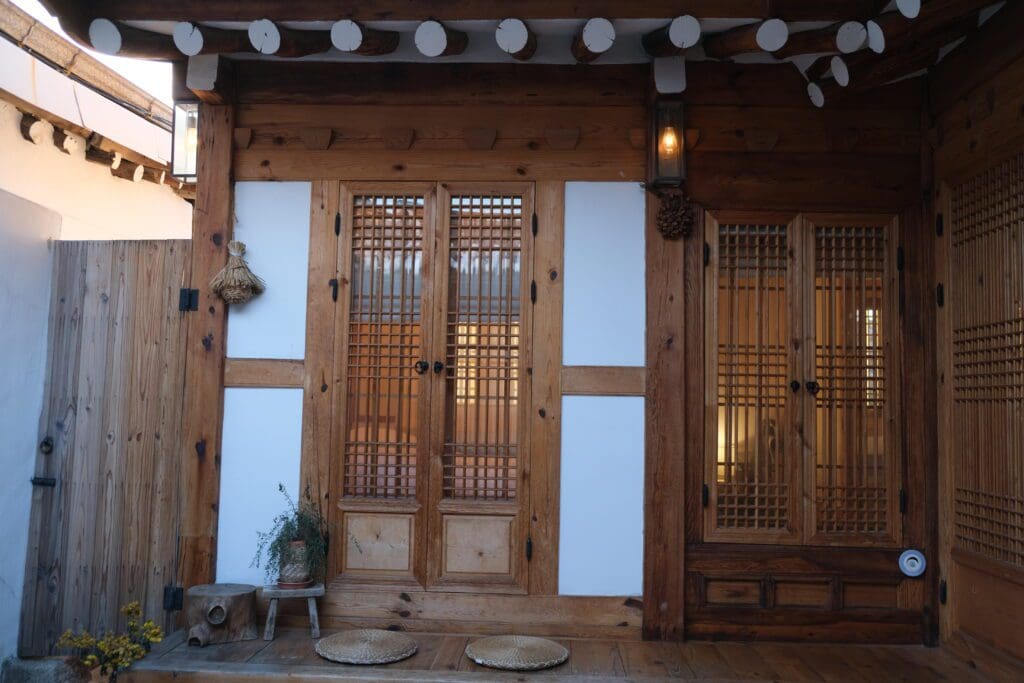
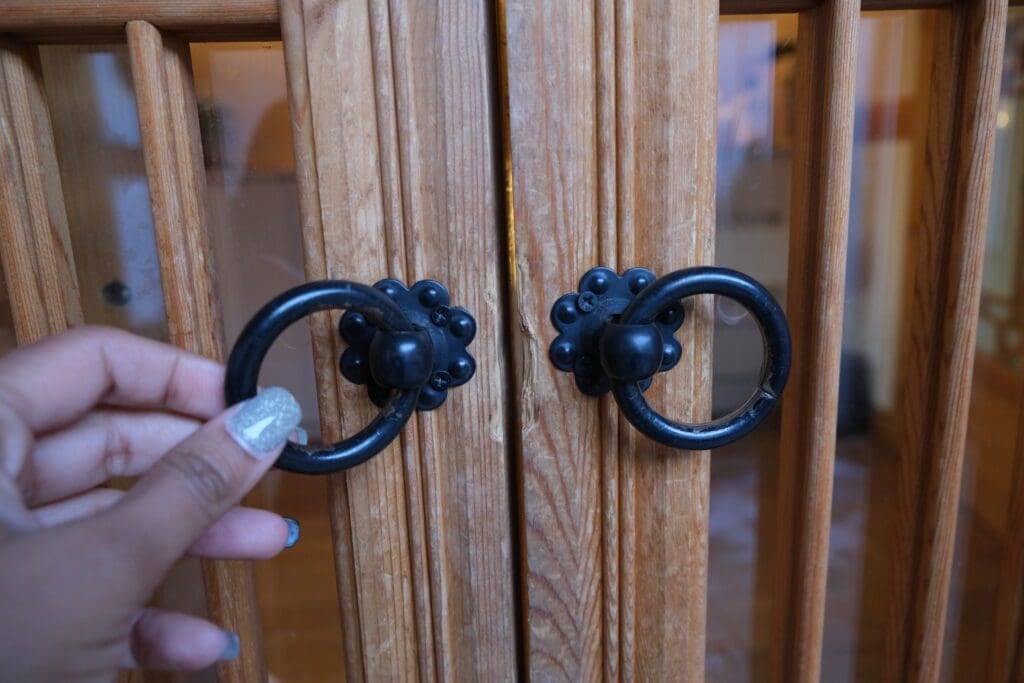
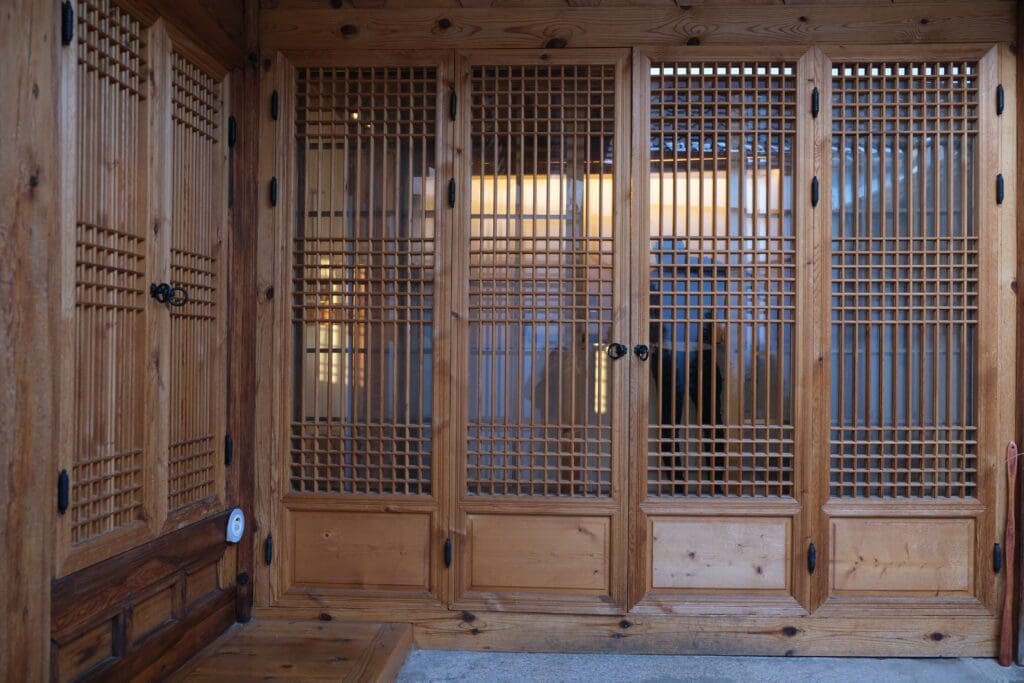
Mostly wood-based, it has two bedrooms, a kitchen-cum-dining-cum-living room, a tiny bathroom and a courtyard in the middle of it with a mini jacuzzi on the side. It was pretty much a typical Northern region-style Hanok, built to provide extra protection from the harsh winter weather.
We loved it so much that we decided to stay in for the rest of the day instead of exploring the area. So after the disappointing lunch at Mong Jung Heon, a Chinese restaurant nearby (avoid at all costs), we made a quick stop at GS25 (a local Korean convenience store akin to 7-11 in other parts of the world), stocked up with Korean drinks and snacks and headed back to the Hanok.
On the way, walking past dozens of Hanoks (some were mansion-like), I got a flashback of the award-winning Korean movie, Parasite. Was the fictional Park home located in a fictional Hanok Village? I couldn’t really recall ━ might have to rewatch the movie.
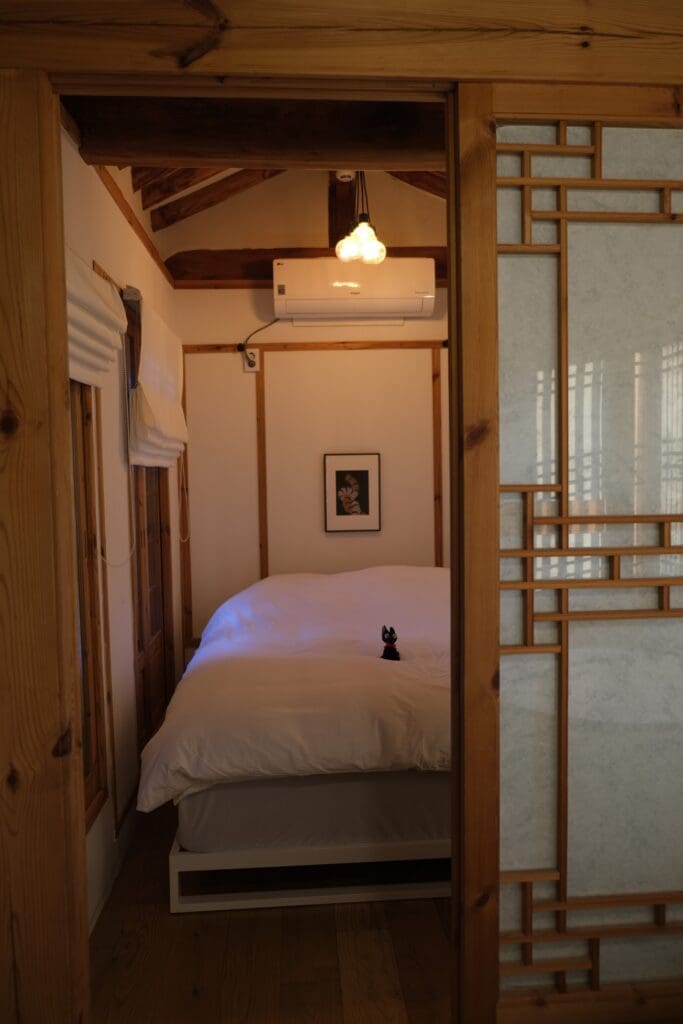
Back in the non-fictional Hanok, we unpacked for one day and chose the bedroom we would sleep in.
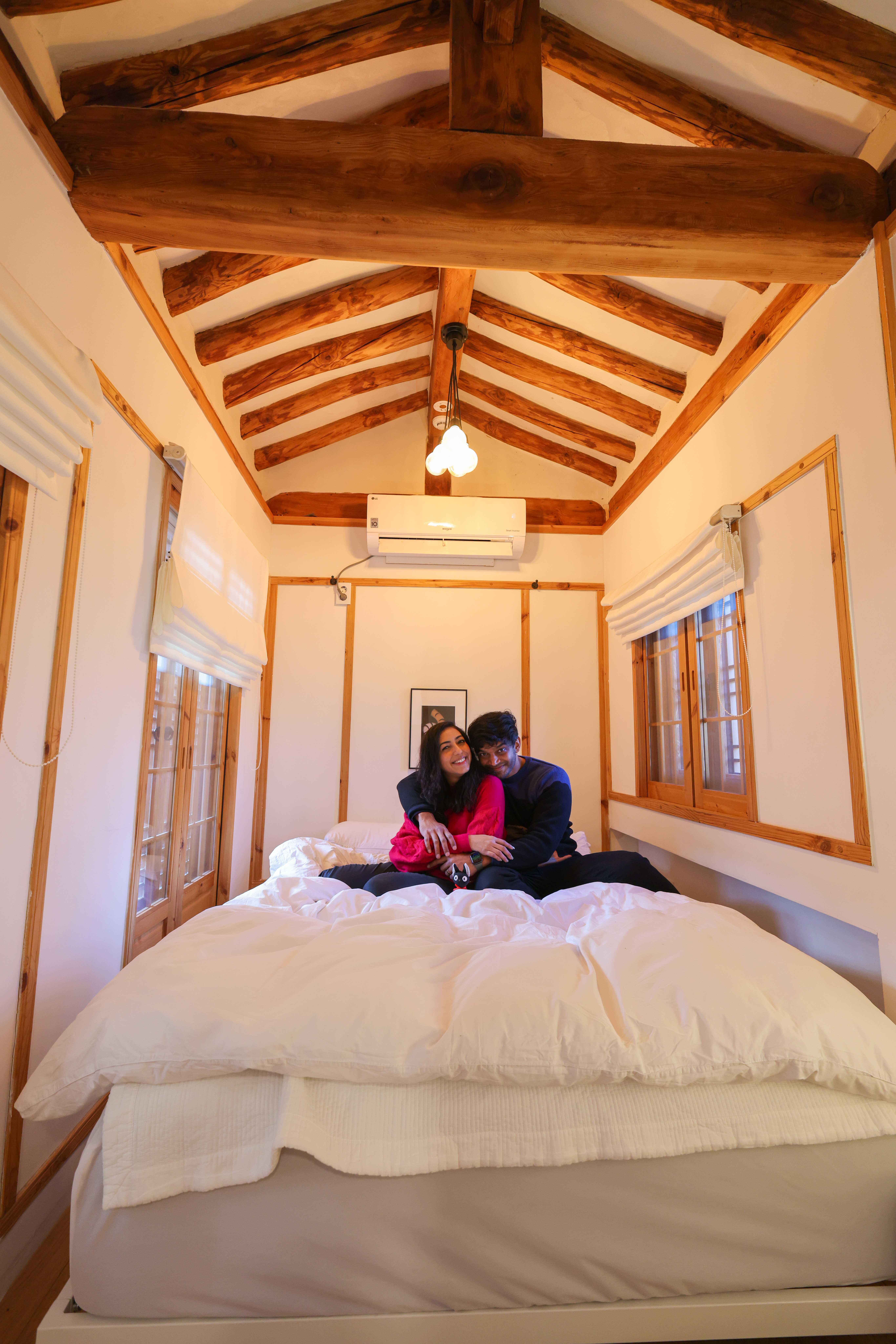
We settled for a smaller one as it had more and bigger windows overlooking the courtyard. It also haf a small art print of a tiger tail decorating the wall; it elevated the whole room’s vibe.
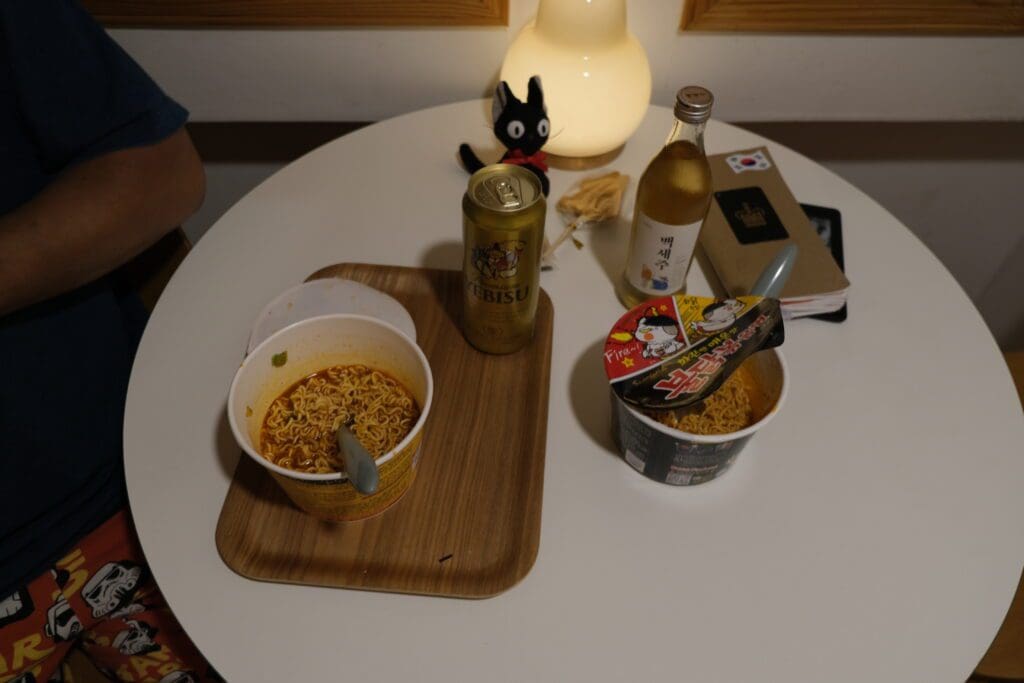
We listened to Spotify and danced in the kitchen while waiting for our instant noodles to be ready. We then ate it along with a copious amount of Korean alcohol.
And for the rest of the evening, we did things separately, as we would do at home ━ together.
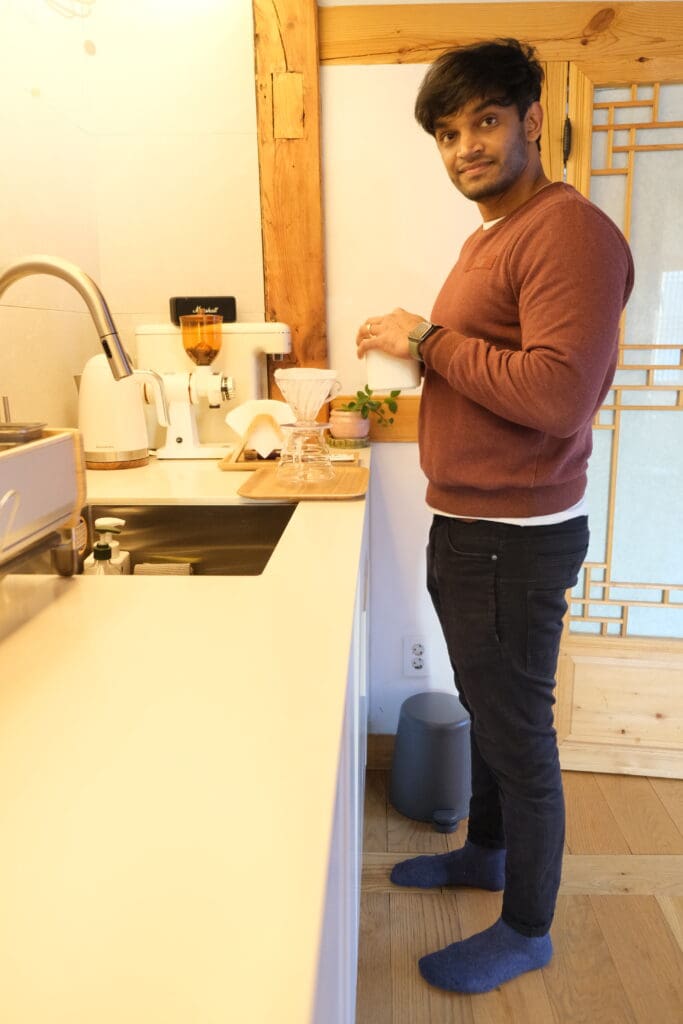
While I sat on Ondol ━ underfloor heating on traditional Korean architecture ━ writing feverishly in my Traveler’s notebook, Fafa made us filter coffee. Then, when I read Tiny Moons by Nina Mingya Powles, Fafa slipped an anniversary card under my pillow.
At night, when I got ready to sleep while listening to the latest episode of the Red Handed podcast, Fafa was beside me, stalking his school friends on Youtube live.
Morning After Hanok
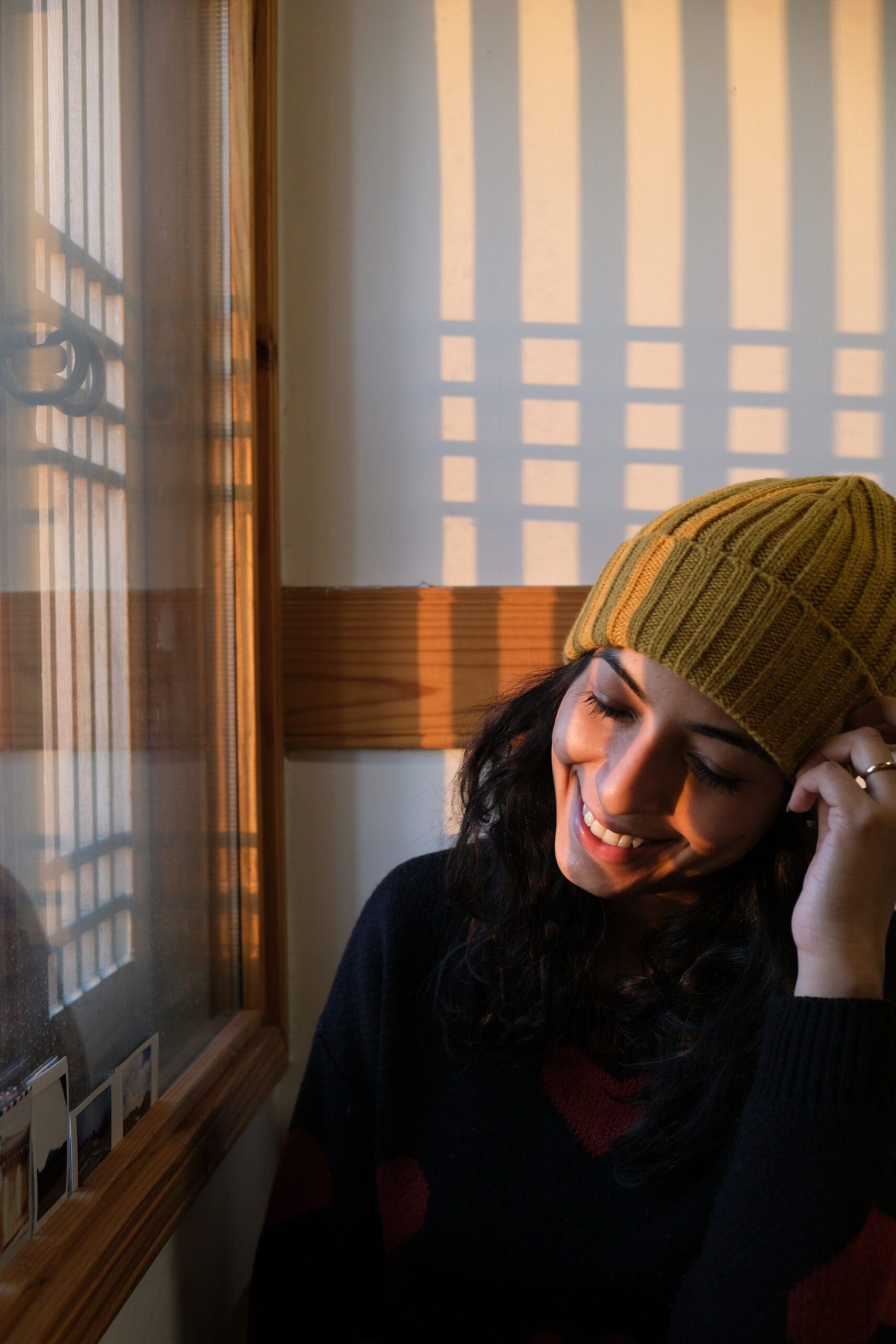
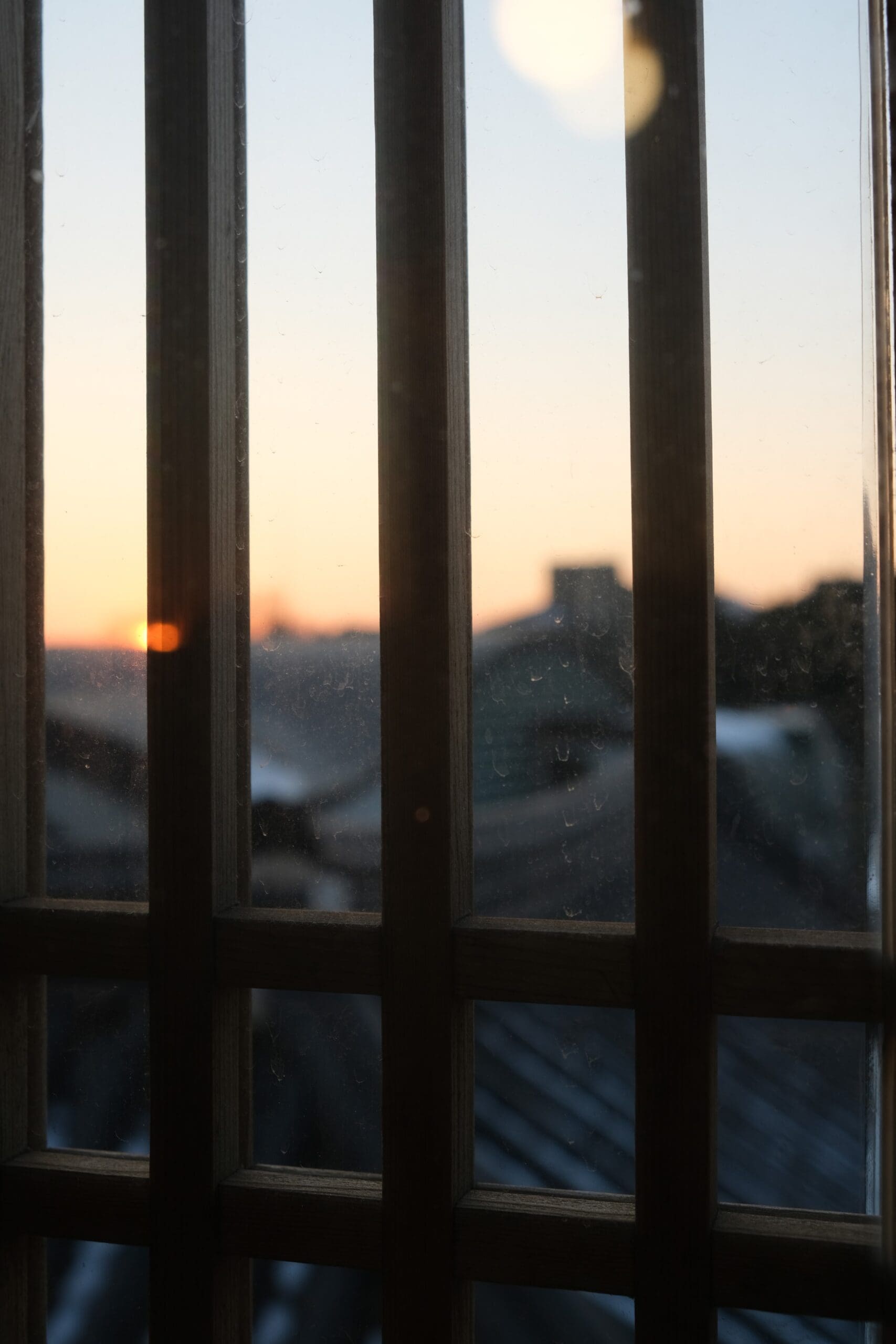
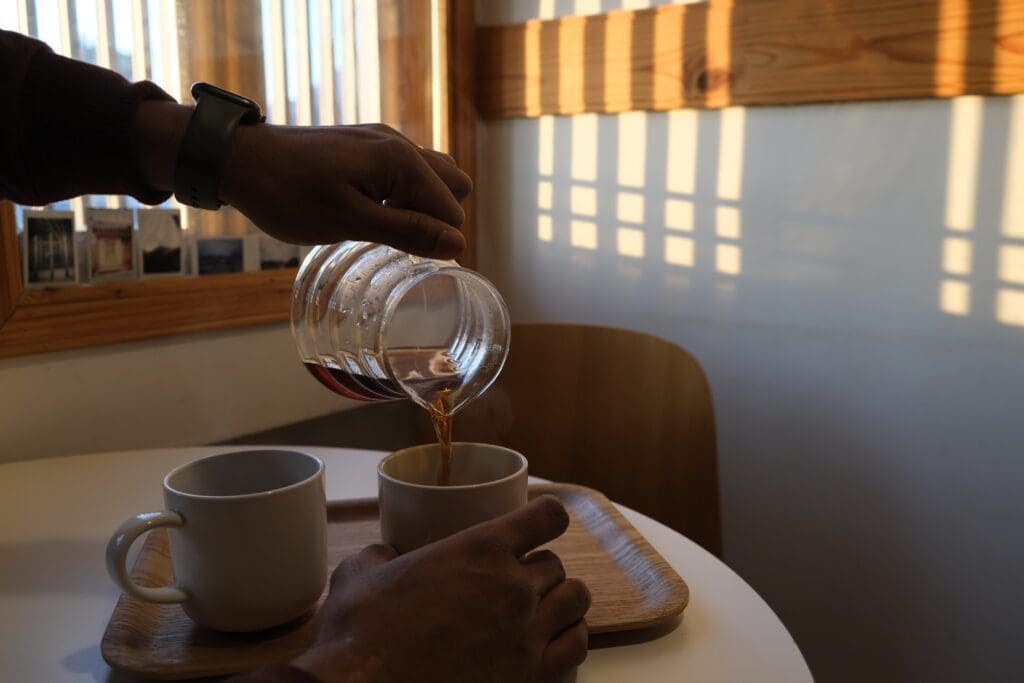
The following day, after a good night’s sleep, I sat at the dining table sipping freshly made coffee. An overwhelming sense of gratitude washed over me when I peeked through the window and saw the beauty of the Bukchon Village laying in front of me. Life is good, especially experienced inside a beautiful Hanok.
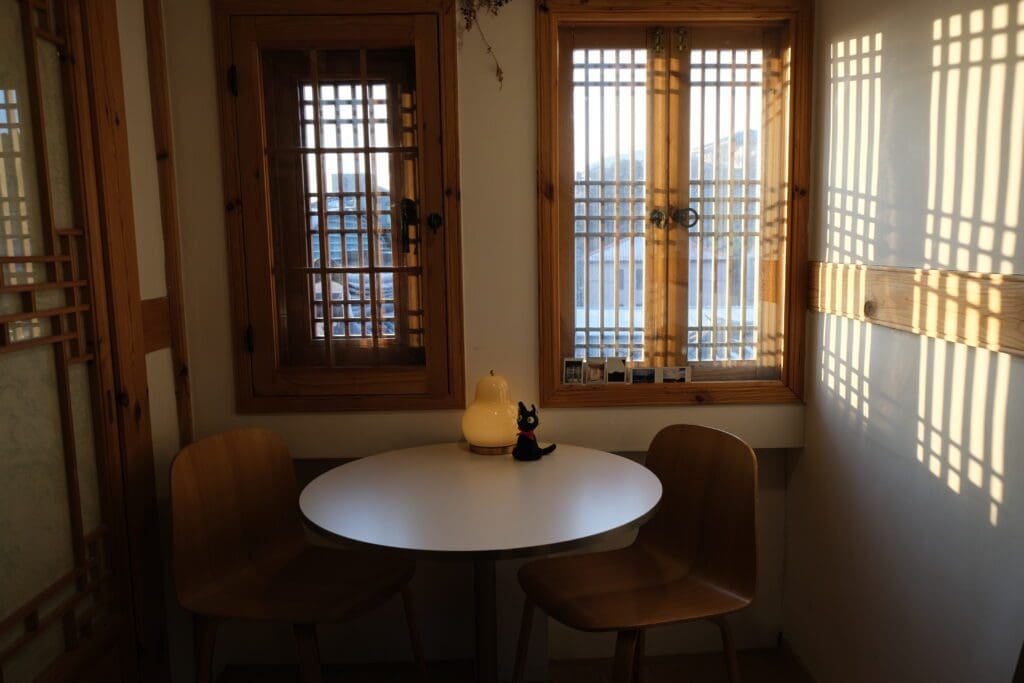
If you have a chance to stay in Hanok when visiting South Korea, I’d highly recommend you do so. It’s a great and memorable way to embrace the local culture. But if staying in one wasn’t an option, you should still visit the Hanok village. There is a well-preserved Hanok in the Bukchon Village that’s free to the public called Baek In-je’s House worth visiting.
Read more on traditional dwellings in other cultures: Hutong // Peranakan Mansion // Penang Blue Mansion // Longtang // Nice apartment.
Follow me on Instagram @KultureKween for more recent updates.
